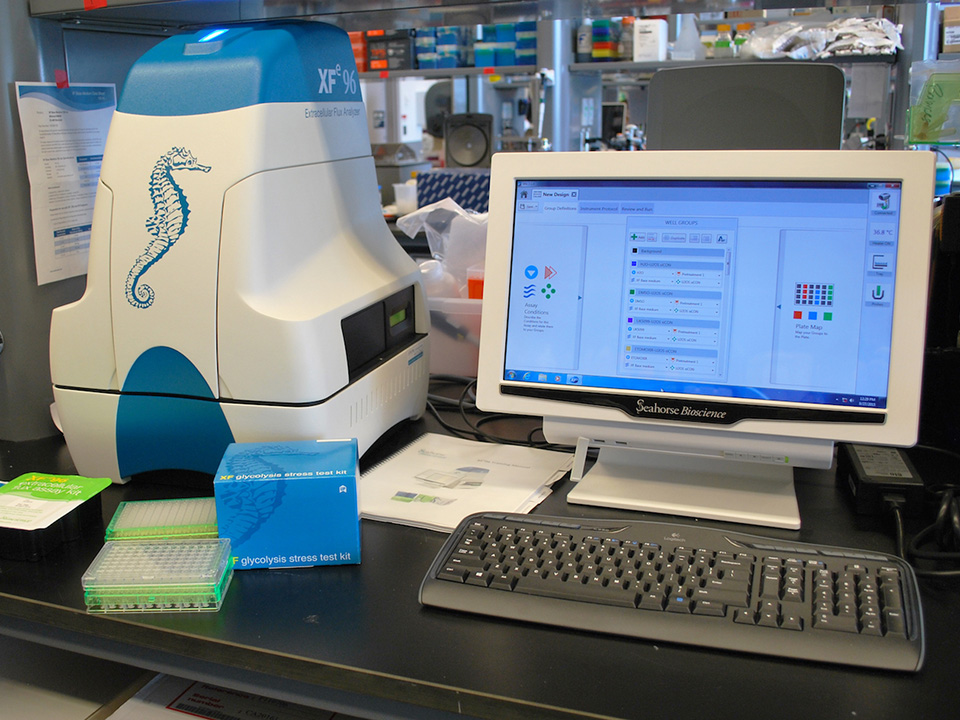Tool Kit: Seahorse Bioscience XFe96 extracellular flux analyzer
By Eleni Kanavas
Sunnybrook Research Institute (SRI) is home to the world’s most advanced metabolic data analyzer. The Seahorse Bioscience XFe96 Extracellular Flux Analyzer simultaneously measures oxygen consumption rate and extracellular acidification rate of living cells cultured in disposable 96-well microplates.
It is the first such system to join the roster of scientific equipment at SRI. The analyzer is used in the lab of Dr. Robert Screaton, a senior scientist in Biological Sciences, for analysis of mitochondrial function and cellular metabolism. The mitochondrion is a critical subcellular organelle that plays a central role in energy homeostasis, insulin secretion and cell death.
“We use the analyzer to see how well mitochondria function in pancreatic beta cells, cells that make and secrete insulin. These cells are lost in patients with Type 1 diabetes or stop working properly in Type 2 diabetics,” says Screaton. “Mitochondria appear to stop working well in beta cells in people who have Type 2 diabetes, so we add different kinds of fuels to ask how well are the mitochondria in beta cells working.”
His research focuses on understanding how human cells respond to extracellular cues to ensure their function and survival. In particular, he studies how the pancreatic beta cell converts feeding cues into signals leading to insulin production and secretion. His work is also relevant to cancer and neurodegeneration.
The Seahorse can make noninvasive, kinetic measurements in real time, where all measurement reagents are embedded in sterile, disposable sensor cartridges. The bench-top system uses solid-state fluorescence sensors to measure oxygen consumption and extracellular acidification rates in two- to five-minute windows using data acquired every 14 seconds.
The analyzer can also run up to five 96-well plates per day. Its automated compound addition feature allows users to inject as many as four different compounds into each well at different times in the experiment to measure the compounds’ effects on the basal metabolic rate. Data analysis and acquisition is integrated into Wave, a Seahorse-supplied software program.
Screaton’s lab also uses the analyzer to do high-throughput functional screens to look for genes that play essential roles in beta cell biology, toward identifying targets for diabetes therapy. The aim is to recognize novel players involved in different cell signalling pathways, including those involved in pancreatic beta cell proliferation and mitochondrial maintenance.
“From our lab’s perspective, we do a lot of imaging-based genetic screens. One of the types of screens that we’ve done is looking for genes that regulate how mitochondria can interact and fuse with one another,” he says. “Why it’s important is that it’s actually critical for neurodevelopment, neurological function and heart function, cell survival and cell death.”
The system arrived in July 2015 and is worth $246,610. It was purchased with funding from the Canada Foundation for Innovation.






